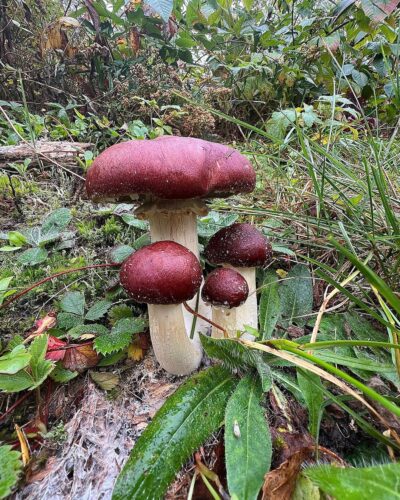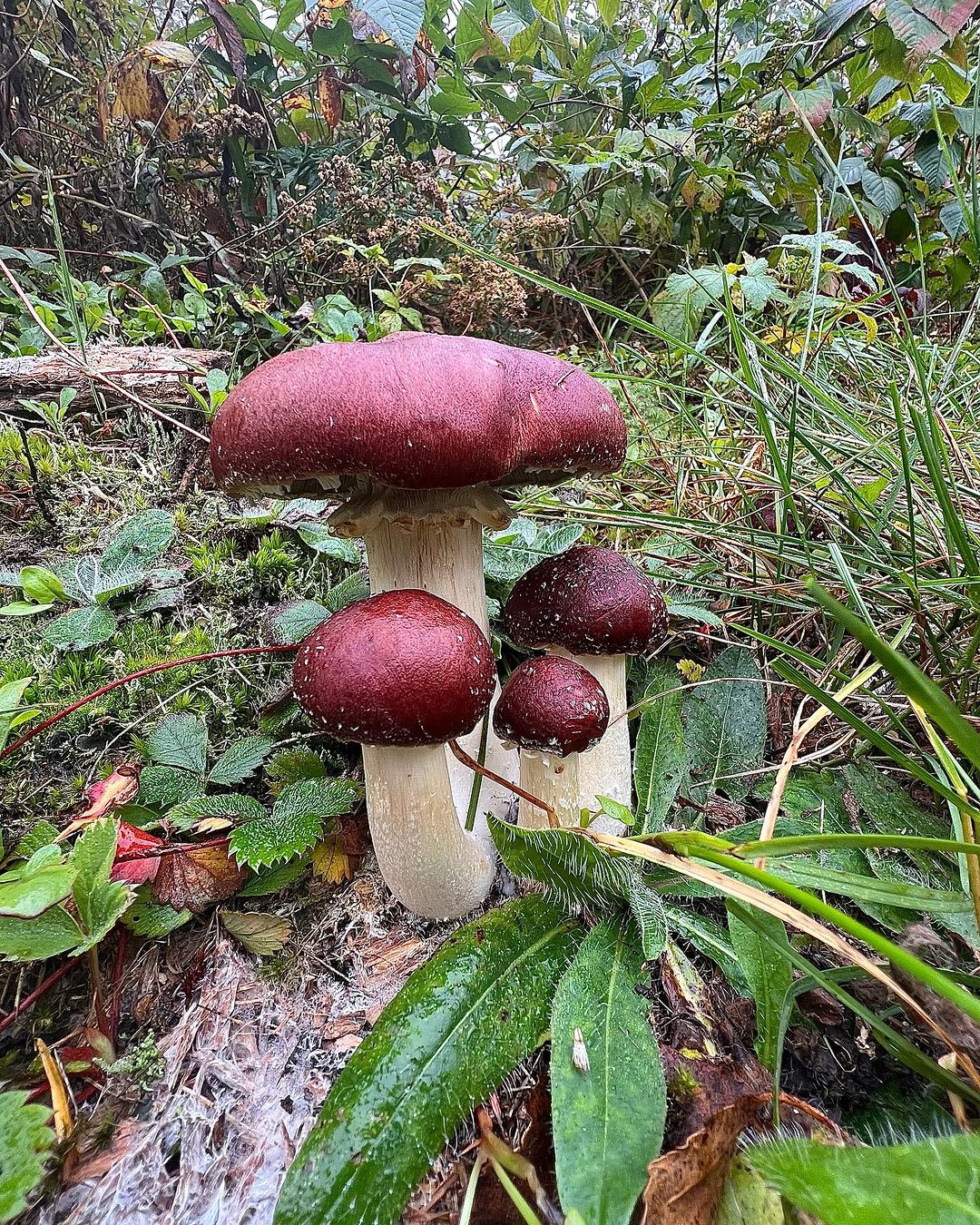Wine Cap Mushrooms can be started during spring; they grow best outdoors. Growing this variety is simple and rewarding.
Growing mushrooms in your garden is rare but very rewarding. Some mushrooms only grow in the wild, but many types are easy to grow at home and great additions to your yearly harvest. The wine cap mushroom stands out for its environmental and health benefits and uniqueness. If not picked early, this garden giant can grow over six inches tall and weigh three to five pounds!
Wine Cap Mushrooms Information

Red wine cap mushrooms Stropharia rugosoannulata (or Stropharia rugoso-annulata.) are also known as burgundy caps, garden giants, or King stropharia mushrooms.
They develop as brick-hued or red-wine lumps on thick, light-colored stalks. With maturity, the caps break away from the veils and show off spore-releasing gills underneath. The ring around the stalk of an older mushroom is a remnant of this broken veil. At full maturity, the mushrooms release spores, and their rich caps often fade from bright burgundy to purple-tan.
Wine caps have a taste similar to shiitake or oyster mushrooms. When young, they offer an extra-rich, cashew-like flavor.
You can add wine caps to your favorite vegetable or pasta dish, sauté them with butter, garlic, and a pinch of salt, or simply enjoy them pan-fried.
Right Time For Planting Wine Cap Spawn/Spores
The best time to inoculate your chosen growing medium with wine cap spores is in the spring. However, summer and fall can also work as long as you keep the newly inoculated patch from getting too dry. Avoid planting too close to winter, as the mushroom’s vast underground rootlike network—its mycelium—needs time to become well-established before potential killing frosts arrive.
Ideal Substrates for Growing Wine Cap Mushrooms
Selecting the right substrate is crucial when growing wine cap mushrooms. This burgundy-capped variety is less fussy about its growing medium than other mushrooms. It sustains and flourishes in a mix of soft and hardwood chips, wheat straw, and weed-free oats. Wine cap mushrooms can be directly grown in the ground in large pots, raised garden beds, or mushroom beds.
How to Grow Wine Cap Mushroom
You can purchase spawns for growing wine cap mushrooms from professional suppliers. These growers typically inoculate sawdust with cultured wine cap mushroom spores. Once the sawdust is fully colonized by wine cap mycelium, it is sold as packaged wine cap mushroom sawdust spawn.
On average, one pound of sawdust spawn can cover approximately nine to ten square feet of an outdoor mushroom bed. Additionally, for each square foot of the mushroom bed, you will need between one and four pounds of freshly chipped wood.
Select a spot with partial shade. Follow the given tips;
- Thoroughly soak the wood chips and allow them to drain.
- Clear the garden area of any vegetation, sticks, and debris, then water the ground well.
- Spread one to two inches of wood chips over the ground.
- Break up about a quarter pound of sawdust spawn with your hands and sprinkle it evenly over the wood chips.
- Lightly water this spawn layer. Repeat the process of spreading wood chips and sprinkling spawn until all the sawdust spawn is used up.
- Finally, add a top layer of two to three inches of wood chips. Water the area again, ensuring it remains moist but not waterlogged.
Harvesting
When growing wine cap mushrooms, you can expect multiple harvests. The timing of your first mushrooms depends on the size of your patch and the substrate materials used. You might see mushrooms in just a couple of months, but other factors also play a role. These include the amount of sunlight and moisture the patch receives, the ambient temperature, and the depth of organic matter the mycelium needs to colonize. Large, deep mushroom beds may take several months to a year to start producing.
Wine cap mushrooms typically emerge when soil temperatures are between 55°F and 65°F (13°C to 18°C). For the best flavor, harvest the mushrooms before their veils open. Once past their prime, mushrooms will have broken veils, large faded caps, and possibly cracked surfaces. Their stems may be yellow, and aging mushrooms often attract various critters, reducing their appeal. Pro tip: Save any mushroom stem butts you trim off in the kitchen. Replanting these stem butts outside can help you grow more wine caps.



